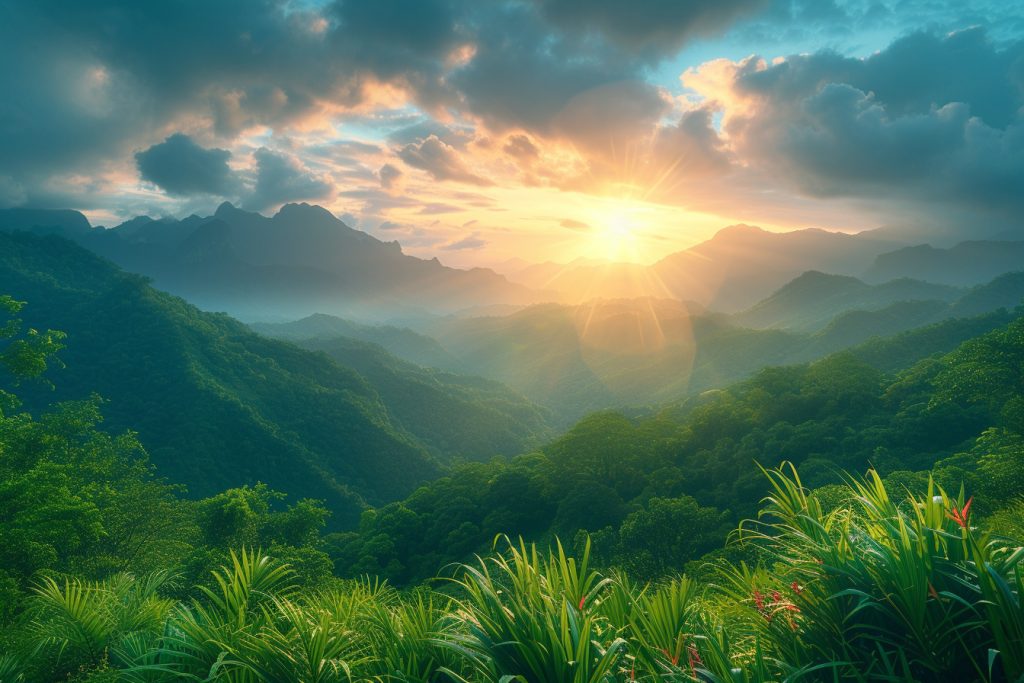Landscape photography is an art form that captures the timeless beauty of nature’s vistas. The goal is to bring the grandeur of the great outdoors into a frame, a task that requires not only technical skills but also an artistic eye. In this comprehensive article, we will explore the top tips that will help you capture stunning scenery through the lens of your camera. These insights will elevate your landscape photography, whether you are an avid amateur or a seasoned professional.
Understand the fundamentals
Before venturing out into the wild with your camera, mastering the basics of photography is essential. Key to this is a solid grasp of the exposure triangle—aperture, shutter speed, and ISO. These three parameters work in harmony to determine the exposure of a photograph. A large aperture (small f-number) results in a shallower depth of field, which can be useful to emphasize particular features within a landscape. Conversely, a small aperture (large f-number) extends the depth of field, bringing more of the scene into sharp focus.
Shutter speed dictates how motion is captured, with longer exposures capable of blurring movement, such as water or clouds, which can inject a dynamic element into your landscape photography. ISO influences the sensor’s sensitivity to light, with higher values helping in low-light conditions but potentially introducing noise into the image.
Harness the light
Lighting is a fundamental aspect of all photography, but in landscape photography, it can be the difference between a good shot and a spectacular one. The quality and direction of light can dramatically alter the mood and impact of a scene. The golden hours of sunrise and sunset provide warm, diffused light that enhances textures and depth. Side lighting can unveil the contours of the land, while backlighting and silhouetting can create dramatic, eye-catching compositions.
When the sky is overcast and the light is soft, colors become deeply saturated and shadows are less harsh, which is excellent for capturing the subtleties in a landscape. Direct midday sun tends to be less desirable due to the harsh shadows and bright highlights it generates.
Compose with care
Composition is the bedrock upon which a stunning landscape shot is built. Respect the rule of thirds, where the frame is divided into a 9-part grid, and important compositional elements are aligned along these lines or their intersections. This technique can help create balanced and engaging images that guide the viewer’s eye through the scene.
Look for leading lines—natural or otherwise—that draw the eye into the image, whether it’s a winding river, a trail, or a row of trees. Foreground interest adds depth to your photographs and invites the viewer to step into the landscape. Don’t hesitate to move around to find fresh perspectives and elevate your compositions beyond the conventional.
Leverage the right gear
While a good photographer can take beautiful photos with any camera, certain equipment can greatly enhance the landscape photography experience. A sturdy tripod is invaluable for achieving sharp images, especially in low-light conditions or when employing long exposure techniques. A set of lenses with varying focal lengths offers creative flexibility; wide-angle lenses for expansive scenes, telephoto lenses for isolating distant details, and macro lenses for capturing the intricacies of nature.
Additionally, consider using filters. Polarizing filters can reduce glare and enhance the blue of skies, while neutral density filters allow you to shoot with longer shutter speeds to create movement in skies and water. Graduated filters help balance the exposure between the sky and land.
Focus on sharpness
Sharpness throughout the image is typically desired in landscape photography. To achieve this, focus about a third of the way into the scene to maximize depth of field. Use a smaller aperture (somewhere between f/8 and f/16 usually) to further ensure a large zone of sharpness from the foreground to the horizon. Checking your camera’s hyperfocal distance can also be beneficial for establishing where to focus to maintain front-to-back sharpness.
Embrace the weather
While inclement weather might seem less than ideal, it brings unique opportunities for dramatic landscape photography. Storm clouds, fog, and even rain can lend an atmosphere to your images that clear skies cannot. Storm lighting can be particularly impressive, offering a play of light and shadow that can give your images a majestic quality.
Mist and fog can simplify a composition, highlighting forms and adding a layer of mystery. After a storm, the air often becomes clear and crisp, which can result in particularly vivid and detailed photos.
Experiment with time
Playing with different timescales can produce fascinating results. Long exposures can turn water into a silky flow and streak clouds across the sky, conveying the passage of time. Time-lapse photography, capturing the same scene at intervals over an extended period, can show changes in light and movement that are imperceptible to the naked eye.
Conversely, freezing a moment with a fast shutter speed—such as the precise instance that a wave crashes against a rock—can encapsulate the raw power and immediacy of nature.
Post-Process with purpose
The work of a landscape photographer does not end in the field. Post-processing is a crucial step in the creative process, providing the opportunity to fine-tune exposure, enhance colors, and correct any lens distortions. The delicate balancing of highlights, shadows, contrast, and saturation can help your images to more accurately reflect the beauty of the scene as you perceived it.
Be mindful not to over-process, as creating natural, believable images should be the goal. Subtlety is often the key to effective post-processing.
Landscape photography is an endlessly rewarding pursuit, a way to connect with the environment and share its splendor. With these tips in mind, your next foray into the great outdoors might yield your best work yet. Keep learning, stay patient, and always remain open to the majesty of the natural world — it is, after all, the greatest canvas we have.








